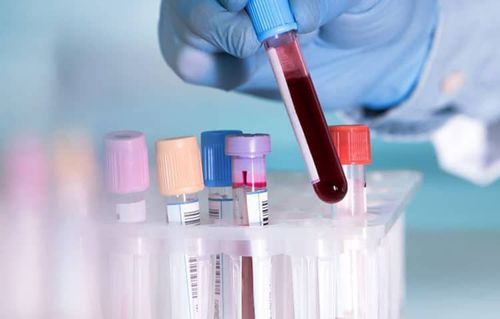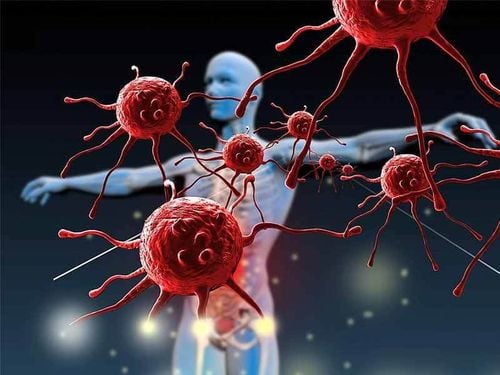This is an automatically translated article.
When exposed to an allergen, the allergic reaction can be rapid (acute allergy) or late (late allergy). However, all are sequentially according to 3 stages of allergy including: sensitization phase, biochemistry and pathophysiology.
Although the common manifestations of allergies in everyone are sneezing, runny nose, dermatitis, red eyes...but there will also be some variation in intensity depending on the cause of the allergy.
1. What is an allergy?
An allergy is an overreaction of the immune system to normally harmless substances (allergens), eg: pollen, peanut butter, milk...and many others.The human immune system is available with lymphocyte white blood cells with a mechanism to protect the body from harmful external agents (viruses, bacteria, germs....also known as "antigens") ). When the lymphocyte detects the antigen, it will form antibodies that destroy the antigen to protect us.
If a substance such as pollen enters the respiratory system of an allergic person, the lymphocytes may mistake the allergen for an antigen and react aggressively to attack the allergen. Some cases of severe allergies can lead to anaphylaxis, which is very dangerous to the body.
Besides, as a natural protective response of the body, some immune cells also trigger the production of mucus, leading to a runny nose, itchy throat or watery eyes that are very common in allergic cases. response.

Dị ứng là phản ứng quá mức của hệ miễn dịch với các chất vô hại thông thường
2. Allergy stages
The normal allergic process will take place in 3 stages:Stage 1: Sensitization phase
When the body is exposed to the allergen for the first time, there will be a reaction in TH2 lymphocytes ( antigen-presenting cells). These immune cells interact with other lymphocytes (called B cells) to produce large amounts of IgE antibodies. IgE circulates in the blood and binds to a specific IgE receptor (FcεRI Fc) on the surface of mast cells and basophils, both of which are involved in acute inflammatory responses.
Stage 2: The biochemical stage of the disease
In stage 2, when the body continues to be exposed to the same allergens, those allergens will bind to IgE molecules on the surface of the cells mast cells or basophils. Cross-linking of the IgE and FcεRI Fc receptors occurs when more than one specific IgE receptor interacts with allergenic molecules, and activates mast cells and basophils. This activation undergoes a process called degranulation which releases histamine and inflammatory mediators (such as Leukotrienes, Prostaglandins...) into surrounding tissues.
Stage 3: Pathophysiological phase
When chemical mediators are released causing several reactions such as vasodilation, nerve excitability, mucus secretion, and smooth muscle contraction. This leads to nasal congestion, sneezing, red eyes, dermatitis, itching, difficulty breathing, and anaphylaxis. If the condition is prolonged and is not handled in time, it can cause organ dysfunction, organ damage and cause some clinical diseases such as urticaria, purpura, bronchial asthma, and bronchial asthma. stomachache, diarrhea...

Quá trình dị ứng thông thường sẽ diễn ra theo 3 giai đoạn: Giai đoạn mẫn cảm, giai đoạn sinh hóa bệnh và giai đoạn sinh lý bệnh
3. Allergy diagnostic tests
In order to accurately identify the allergen, tests are performed to support the diagnosis of allergies such as:Total blood analysis: Helps evaluate the percentage of eosinophils; Whole IgE blood test; Allergen-specific IgE blood test (Allergen Panel) to measure response to individual allergens. The role of allergy testing:
Helps diagnose allergies in people with signs of acute or chronic allergy. Support monitoring and evaluation of immunotherapy results. Allergy Panel test helps to evaluate 60 common allergens, focusing mainly on food groups such as seafood, milk, peanut butter... and some allergens that come in contact with the external environment. like dust, dog and cat hair...

Để xác định chính xác tác nhân gây dị ứng, người ta thực hiện các xét nghiệm hỗ trợ chẩn đoán dị ứng như: Xét nghiệm tổng phân tích máu, xét nghiệm máu IgE toàn phần,...
Please dial HOTLINE for more information or register for an appointment HERE. Download MyVinmec app to make appointments faster and to manage your bookings easily.













